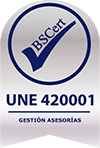
Updated: 07/05/21
The new earnings-related contribution system is postponed until 2023.
The Government intended to implement the system by 2022. It finally delays until 2023 the entry into force of the new system of contributions based on real income for the self-employed affiliated to the RETA.
The implementation will take place over a period of ten years, so that self-employed workers who have to pay a higher contribution will have a longer adaptation period.
From 1 January 2023, the self-employed will continue to be able to choose their contribution base on the basis of their net income. They will then have to regularise their situation in 2024 once they have filed their income tax return.
In principle, the social security will establish 13 brackets into which the self-employed can fit their net income. However, both the number of brackets and the minimum contribution bases for each bracket are yet to be determined. This system does not take into account whether a self-employed person earns more or less, but, once the base has been chosen, it does not matter what he or she earns, as he or she will have to pay the same. Each self-employed person could choose their contribution base, depending on their expected net income, albeit on a provisional basis. This flexibility will be temporary and they can change it several times during the year according to their needs.
It is a complex system to implement. The government will focus much of the work on the actual income control system, enabling new tools and mechanisms to determine the income of all self-employed workers, not only those in direct estimation.
The system will bring the reality of contributions closer to the income from self-employed activities and bring benefits for incapacity for work or retirement pensions into line with those of employees.




